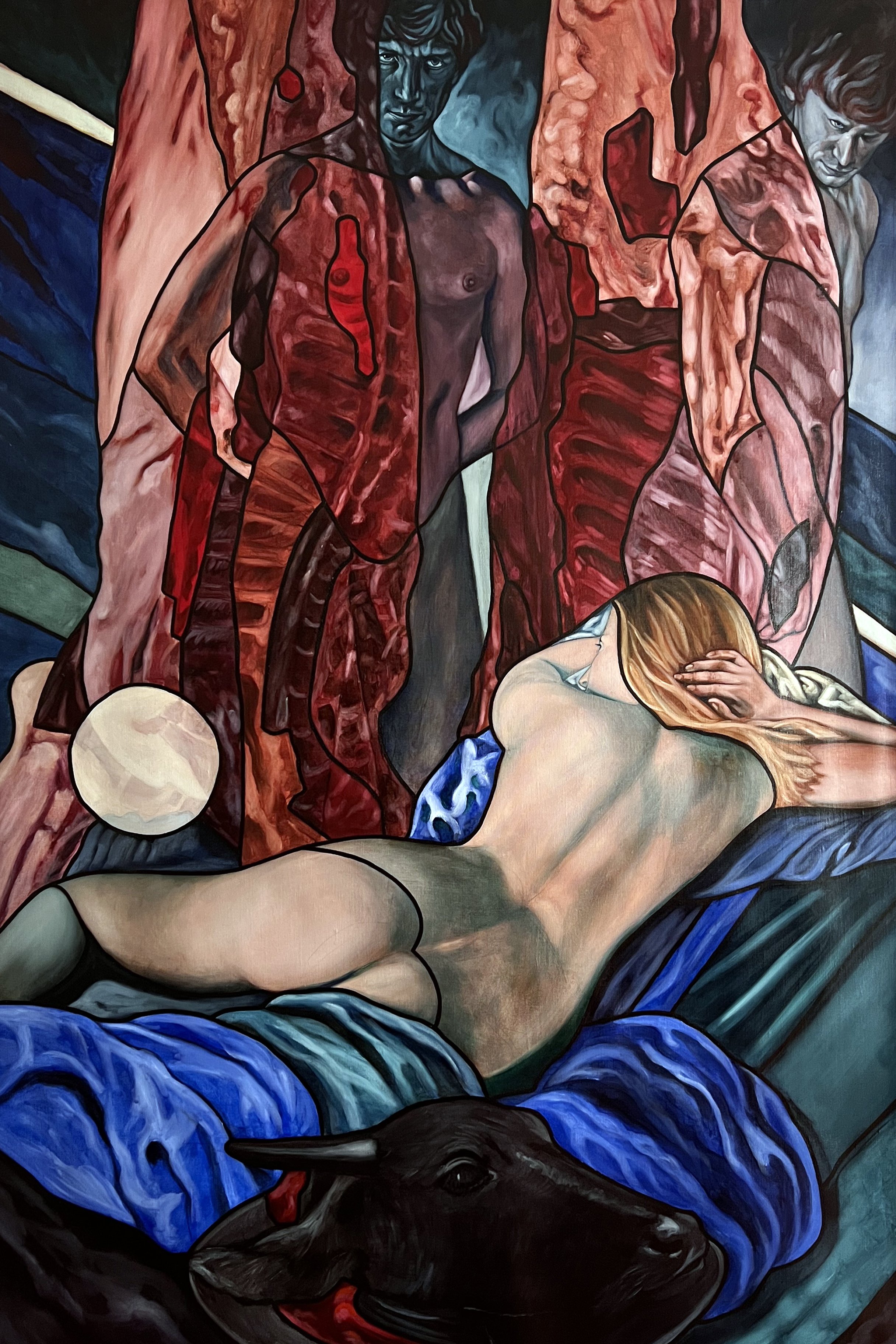Décalogue:
The Ten Commandments
Prologue
In the Middle Ages, a magician left Bernardin.T with the legacy of an enchanted potion, the secret of eternal youth. This enabled the alchemist to miraculously defy the restraints of the flesh and passing of time, but had not convinced him of the value of immortality. It is, in contrary, the ephemeral charisma of life that contains the most interests and flavours.
In present time, when God is dead, when the devil no longer inspires fear, The Décalogue became a reminder from the alchemist to mankind: we used to believe in the good and the forces of evil, the necessity to protect ourselves from it.
The Ten Commandments shaped our common morality. It allowed us to coexist with minimised conflicts.
The First Commandment - “You shall have no other God’s before me” - bases the laws on the existence of God and his pre-eminence over men ; the men who thought that God is a chimera, that Google, technology, screens, have replaced him, that the promise of an eternal afterlife is meager comparing to the immediate earthly enjoyment.
Revealing the knowledge of the sacred and the unholy, Bernardin.T uses the ancient technique of leaded stained glass to create ten works of light in this series.
“La lumière n’est belle qu’incarnée à travers
Un vitrail ou le verre d’une bouteille de vin...
Consentons donc au sort d’être un œil fini
Qui se fait reflet de l’Éclat infini. ”
ART DU vitrail - the stained glass project
Over a century ago, Marcel Duchamp, sought to exhibit an inverted urinal (Fountain, 1917) in a place reserved for art. He transformed one of the most trivial objects into a work of art, a toad into a prince, opening a pathway to a fertile practice of Contemporary Art which does not cease to challenge the public.
Similarly, incorporating a special image into a stained-glass frame transforms the meaning of the image itself.
In Western art, stained glass is a medium almost exclusively reserved for religious representation. Décalogue became a pretext to my questioning of the presence of holiness in our world, to apprehend its transitory character, to endeavour a hierarchy between the sacred and the sacrilegious which can suit the individual and resist the more or less legitimate imperatives of our time.
THE story behind
Stained-glass art, also called “le vitrail” in French, has its unique relationship between glass and light, which brought the colours to life through refraction. An interplay between the two elements that sparks imagination with an aura of mystery and romance. It is one of the most unchanged crafts since the medieval times, as the technique has been well preserved and remained authentic.
As humans are incarnated in bodies of flesh and use them as vehicles to reach a higher purpose than animal living, stained-glass art uses sand and fire to create a superior medium that conducts light.
“Light is only beautiful incarnated through
A stained-glass window or the glass of a wine bottle...
Let’s agree then to the fate of being a finished eye
That makes itself the reflect of an infinite Radiance.”
Made of sand, fire and lead, “vitrail” is an alchemy that allows the spiritual aspirations of an incarnated individual to be transcribed.
It is an open window to a larger and more poetic world.
THE PROCESS
Sketch
The small-scale coloured drawing served as a truthful impression of how the final “vitrail” would be envisaged.
Cartoon
The full-size working drawing for the “vitrail” gave precision to all the dimensions and details. Bold black lines of charcoal represented the leads, shading suggests painting on the glass. The glass-cutter would then continue the work from a tracing made from this cartoon.
Cutline
Each segment of the cutline was numbered with colour indication. The cut shapes became templates for the glasses which would later be cut directly from the cutline.
Choice of glass
Selecting from an infinite palette of colours and different quality of glasses, the most representative choices were made based on the original coloured sketch.
Cutting
The chosen glass was cut to shape by experienced craftsman with a steel-wheel cutter in two stages: Initial incision (fracture) and deepened divide through pressure/tapping. Each glass was wiped with another piece to blunt out the razor-sharp edges.
Aciding, painting and silver stain
Aciding, or etching, is the process of removing the coloured layer to control and modify the light that comes through. The main linework was traced from the drawing beneath and a water-resistant dilute solution of acetic acid was used as the medium. A silver, or yellow stain (where the name stained glass derive from) was then painted on to the outer surface of white glass. The change in ionisation caused the glass to filtrate yellow light instead of the white it previously did.
Firing
Painted glasses were laid out in iron trays and fired in a kiln for the paint and glass to fuse together. It is then slowly annealed.
Leading-up
The assembly of the glass into leads was done on a bench with the cutline for guidance. A lead was stretched, cut and put in place, with the soft strips cut to the exact length with a special cutting knife. The glass was inserted into both sides of the lead so that it would touch the centre.
about THE ARTIST
Bernardin.T is a French artist based in Paris. His paintings are formalised investigations into the artist’s own pursuit of truth, they are spirited and enchanting responses to the world at large. For instance, his practice at current seems concerned with ornate nature of puritanical religion. In juxtaposition however, there is also an obsession with a free-spirited notion of intimacy and sexual liberation.
Reference:
Marcel Duchamp - San Francisco Museum of Modern Art (https://www.sfmoma.org/artwork/98.291/] [Access 4/1/23]
History of Stained Glass - The Stained Glass Association of America (https://www.stainedglass.org/learning-resources/history-stained-glass) [Access 3/1/23]
The Technique - Chartres Centre International du Vitrail (https://www.centre-vitrail.org/en/the-technique/) [Access 28/12/22]
François Cheng - Académie Français (https://www.academie-francaise.fr/les-immortels/francois-cheng) [Access 29/12/22]

















